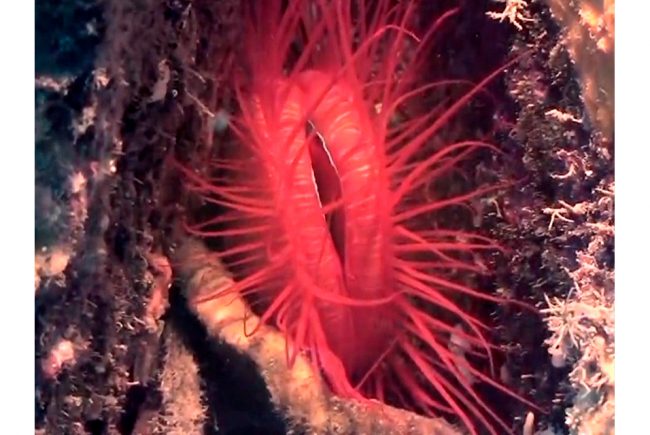NOWs: The Far Away Is Here
The Far Away Is Here
online video group exhibition

Anne Duk Hee Jordan, Ziggy and the Starfish, 2018, video single-channel color, 16:28 min.
With: Marie José Burki, Sue de Beer, Anne Duk Hee Jordan, Sanja Latinović, Rachel Monosov
Curated by Rachel Monosov & Catinca Tabacaru
Catinca Tabacaru presents The Far Away Is Here, a video exhibition presented exclusively on our gallery website with works by Marie José Burki, Sue de Beer, Sanja Latinović, Anne Duk Hee Jordan, Rachel Monosov. It is a curatorial response to the current global crisis in both content and form.
What is happening over there will not happen here!
This time it started in China, and neither the EU, nor any other nations held meetings on how to help the red dragon; maybe thinking that COVID-19 won’t arrive to their part of the world.
This idea that war, refugee crisis, or viruses, are far-away and not here, is the complete opposite of solidarity.
Clearly, we are currently face to face with what we saw happening far-away. And now, because it is here, we are turning the world upside down.
What if we always lived with the idea that the far-away is actually also here?
Maybe this perspective will change our behavior completely.
By force, this virus brings to the forefront a global realty as each of us lives a similar experience. There is no here and there any longer. The differences are small, and all based in governmental ideology and enforcement. On a human level, we turn to solidarity, empathy, and respect in the search for a cure for both the virus and our civilization.
The video works The Far Away Is Here take these ideas as their starting point… even before these ideas were at the forefront of our minds, conversations, and news.
Sanja Latinovic’s Abandoned, a performance-based work, “is how we feel right now in Belgrade.”
Sue de Beer’s characters in her low-budget horror-thriller The White Wolf grapple to find equilibrium and meaning in the midst of an experience that is out of their control.
In It will end up in me, Rachel Monosov places ideas from traditional Indonesian medicine as a mirror in front of the “savage neo-liberalist intensification of deep social economic problems,” in Noam Chomsky’s words, as capitalist governments have known for a long time that pandemics would become a problem but failed to prepare for them because the market signals were wrong (Coronavirus – What is at stake?, DiEM25 TV, 17:00 – 18:24).
While Anne Duk Hee Jordan’s Ziggy and the Starfish gestates in a political world, it is not overtly political as it begs the question “how will we adapt?”
In A Film by Marie José Burki we listen to a familiar conversation about global warming, information we all know but do little with because global warming is happening somewhere there and not here, so we turn on our air conditioning and ignore what is happening outside our windows. Do we need to wait until our air conditioner turns into a melted stinky plastic box to change our behavior? Morton offers the example of global warming as a hyperobject which impacts meteorological conditions, such as tornado formation. Entities do not feel global warming, but instead, experience tornadoes as they cause damage in specific places (Disparitiesvon Slavoj Žižek, p. 34).
The exhibition will grow, evolve, and adapt, just as we are doing each day with shifting laws and turbulent emotions. Programming of lectures and interviews will springboard from the films and take us deeper into the issues at hand, maybe even walk us through windows we haven’t yet considered.